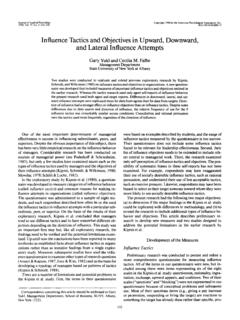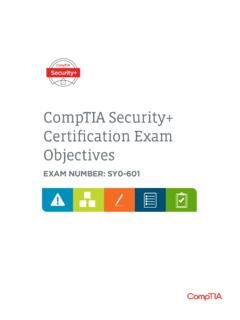Transcription of Developing a Communication Plan
1 Chapter 4 Developing a Communication plan The Communication plan may be one of the most important documents that you and your Communication workgroup create. It serves as a programmatic road map to define what you are trying to achieve, the steps you will take to accomplish your goals and objectives , and how you will measure success. To develop a Communication plan , you need to draw from formative research, information about the health issue, and the expertise of your partners. This process is your opportunity to think strategically about the intervention tactics that are most likely to resonate with your target audiences. Taking Action for Heart-healthy and Stroke-free States: A Communication Guide for Policy and Environmental Change 25 With workgroups, as with any intricately structured organization, thoughtful and all-inclusive team planning is an essential task for ensuring the success of the program.
2 After recruiting the core members of your workgroup, schedule a meeting of the partners to start planning the Communication program. To keep the meeting focused, you may wish 4 to develop an outline of a proposed plan including your preliminary ideas which can be used as a basis for discussion. Although you and/or your staff may have specific ideas about the direction the Communication initiative should take, it is important to remain flexible and open to considering a multitude of strategic and creative suggestions. To fully invest each member in your effort, you must prove to them early that their opinions, interests, and needs will be recognized and respected throughout the planning process. Thus, if you do open the meeting with a draft outline The ability to persuasively communicate the need for policy and environmental changes that support heart-healthy lifestyles is a critical competency of public health practice.
3 From partnership and cross-cultural Communication to media advocacy, Communication skills will help define future success in preventing the national tragedy of heart disease and stroke. Virginia Bales Harris, Director, Division of Adult and Community Health, CDC Taking Action for Heart-healthy and Stroke-free States: of your Communication plan , make it clear to your partners that their input is necessary before the plan can be completed. ESTABLISH PROGRAM GOALS The first step in Developing a Communication plan is to determine the goals of your effort to promote CVH policy and environmental change. The object is to accomplish the following preliminary work: Establish consensus on the reasons you are entering a partnership and the goals of the Communication efforts. Set realistic expectations, and effectively leverage your workgroup s combined skills, resources, and associations.
4 Create guideposts to keep your work on track and to measure the success of your efforts. Review information with the group to help focus the Communication priorities. IDENTIFY AND SEGMENT TARGET AUDIENCES Select the audiences your Communication effort will target. Because cardiovascular health is a concern for all segments of society, you and your workgroup need to identify which audience segments are most important to reach with interventions to achieve policy and environmental changes related to CVH. For example, if your partners seek to communicate information about the importance of incentives for hospitals to provide specialized care for patients with stroke, the target audiences might include legislators, hospital administrators, health care providers, consumer advocacy organizations, and individual consumers who can help to advance this effort.
5 To ensure that your limited resources are used most efficiently and effectively, you and members of your A Communication Guide for Policy and Environmental Change 26 workgroup should prioritize these groups. Lawmakers are likely to be the primary target audience, and you can designate the remaining groups as secondary. Given the extremely diverse backgrounds, perspectives, and media preferences of these groups, they must be further categorized to select the most appropriate channel(s), language(s), and literacy level(s) for effective Communication with each group. The basic principle of audience segmentation is simple: people respond differently to messages depending on behavioral, cultural, demographic, physical, psychographic, geographic, and other factors. Defining subgroups of your target audience according to these elements can help you to develop the messages, materials, and activities that are the most relevant and appealing to them.
6 Use the following characteristics to help define the key audience Behavioral: Health activities or choices, media use, and lifestyle. Cultural: Language, religion, family structure, dietary practices, and perceptions of health. Demographic: Sex, age, race, education, income, and employment. Physical: Medical condition, type and degree of exposure to health risks, and family health history. Psychographic: Attitudes toward life and health, personality traits, values, opinions, and beliefs. Geographic: Access to health resources, places of residence and work, work setting, and environment. Once you identify the key audience segments, begin to set Communication priorities and determine the target groups for Communication . Primary audiences are the segments you want your initiative to affect in some way. In contrast, secondary or gateway audiences are the groups that influence primary audiences or have a strong interest in promoting your intervention among primary audiences.
7 For example, if your workgroup promotes policy change within health care payer organizations to support adherence to national guidelines for the treatment of high blood pressure, the primary audience would likely be the health care administrators who have a role in setting organizational policy. Because physicians, nurse managers, health plan 4members, and general consumers all influence the decisions of health care administrators, however, these groups might be designated as secondary audiences. To guide the prioritization of the key audience segments, ask the following questions: What is a realistic Communication objective for this audience segment? What kind of policy and environmental change can this group make, and how receptive is it to making that change? Will fulfilling that Communication objective adequately support your health program s goal?
8 Because your effort is focused on facilitating population- and system-wide improvement, the key segments should wield significant societal influence. To what degree will members of this group benefit from the Communication ? Health care, school, business, and community leaders who stand to gain from their involvement in CVH promotional efforts may be more receptive to messages about policy and environmental changes related to CVH. How effectively will available resources and channels reach this audience segment? If your Communication effort will emphasize the promotion of tools and tactics of media outreach and community education, make sure your targeted groups will be receptive to this approach. Taking Action for Heart-healthy and Stroke-free States: A Communication Guide for Policy and Environmental Change 27 4 To what extent does the secondary audience influence the primary audience?
9 Depending on your resources, you should determine the most cost-effective way to reach the primary audience. Some groups may be more receptive to direct outreach strategies, and others are more heavily influenced by information from secondary parties. For example, public service announcements, while often targeted to consumers, can also raise awareness and motivate policy makers to address a particular issue. Taking Action for Heart-healthy and Stroke-free States: Answering these questions will help you to identify audience segments that should be excluded from your Communication efforts. Narrowing the scope of your key audience segments will help you to simplify the message development and dissemination processes and to make the most productive use of program resources. CHART A COLLECTIVE COURSE After deciding on the program s goals, objectives , and target audience segments, you and your partners should develop a plan to collectively reach them.
10 Start by TIPSC ommunication Goals and objectives Identity Communication Channels Messages, Materials, and Activities Partners Timeline Evaluation Communication plan : CORE COMPONENTS Short-term and long-term goals and measurable program objectives , tied to desired CVH policy and environmental changes. Where possible, desired outcomes should be given a quantitative baseline, based on available state data. Formal name, logo, tagline, and other branding elements of a workgroup that will help build it into a recognized movement. Organizational The identification of primary and secondary target audiences. Target Audiences Recommended channels for reaching target audiences, based on congruence with Communication objectives ( , reach, cost, and opportunities for multiple exposures to message). Description of message strategies, directional content, tone, and manner; suggested materials and activities, such as media outreach and community programs; identification of action(s) target audiences should take; and benefits of the desired action(s) that can be suggested.

















